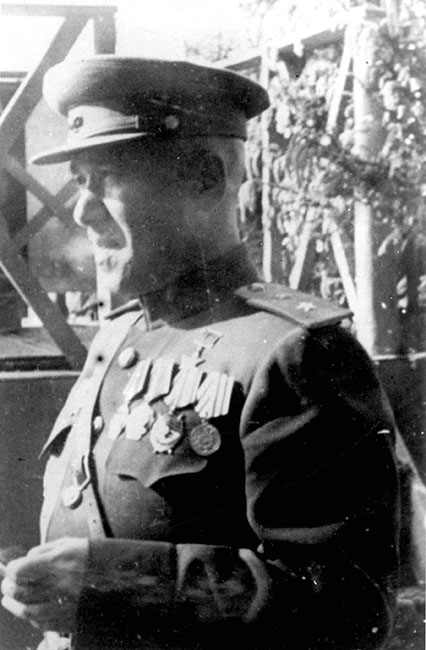Semion (Shimon) Krivoshein was born in 1899 in the Russian city of Voronezh, that was located outside the territory of the Pale of Settlement. His father was a watchmaker and his mother a seamstress. He had completed seven years of schooling before the 1917 Bolshevik revolution. The following year he joined the Red Army and remained in it after the end of the Russian civil war. In 1931, after graduating from the Frunze Military Academy, Krivoshein was dispatched to the tank forces, where he made a successful career: first as chief of staff of a regiment, then as a commander of one, then as chief of staff of a division and, finally, as a commander of a brigade.
In 1939 the tank brigade of Colonel Krivoshein took part in the Soviet annexation of western Belorussia. Krivoshein participated in the joint parade of Soviet and German troops on September 22 in Brest.
In the winter of 1939-1940 he participated in the Soviet-Finnish campaign and, in June, was promoted to the rank of major-general of the tank forces.
The beginning of the Soviet-German war in June 1941 found Krivoshein in the Baltics; but a month later he was fighting in defensive battles in Ukraine.
In August 1941 Major General Krivoshein was appointed head of the administration of combat training of the armored and mechanized forces of the Red Army. However, in February 1943 he was again on the front lines.
In July and August 1943 Krivoshein's mechanized corps took part in the battle for Kursk and then in the destruction of the enemy's Belgorod-Kharkov forces. On August 21 he received the rank of lieutenant-general of the tank forces.
In December 1943 Krivoshein's corps fought on the First Ukrainian Front and from the following summer on the First Belorussian Front. After this he participated in the liberation of Poland.
From January to March 1945 his corps took part in the Vistula-Oder operation. Starting on April 17, Krivoshein's mechanized corps participated in the battle for Berlin. On April 25 his tanks were the first to break through into the German capital. On May 29, after the German surrender, Semion Krivoshein was awarded the title of Hero of the Soviet Union.
During the war he had been honored with the Order of the Red Banner and the Orders of Suvorov and Kutuzov, that were reserved for Soviet officers. In May 1945 an article by Shmuel Persov about General Krivoshein was sent by the Jewish Anti-fascist Committee to Jewish news agencies and newspapers in the United States, England, Mexico, France, and elsewhere. Persov referred to Krivoshein as "a son of the Jewish people."
For some time after the war Semion Krivoshein was the commander of a division, then he became head of a department at a military academy. His last post was commander of the armored forces of a military region. In May 1954 Lieutenant-General Krivoshein left active service for the reserves. He died on September 16, 1978.

